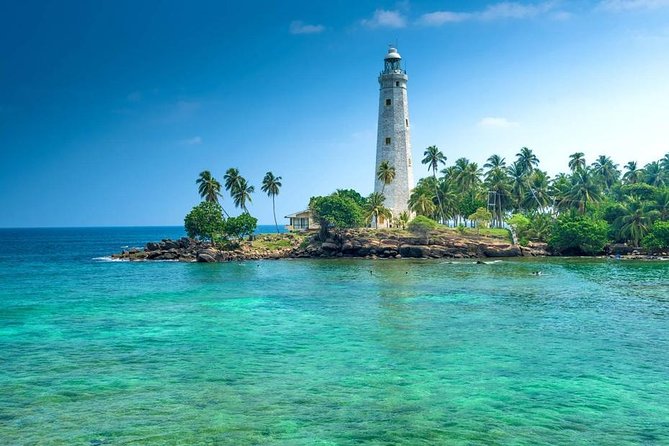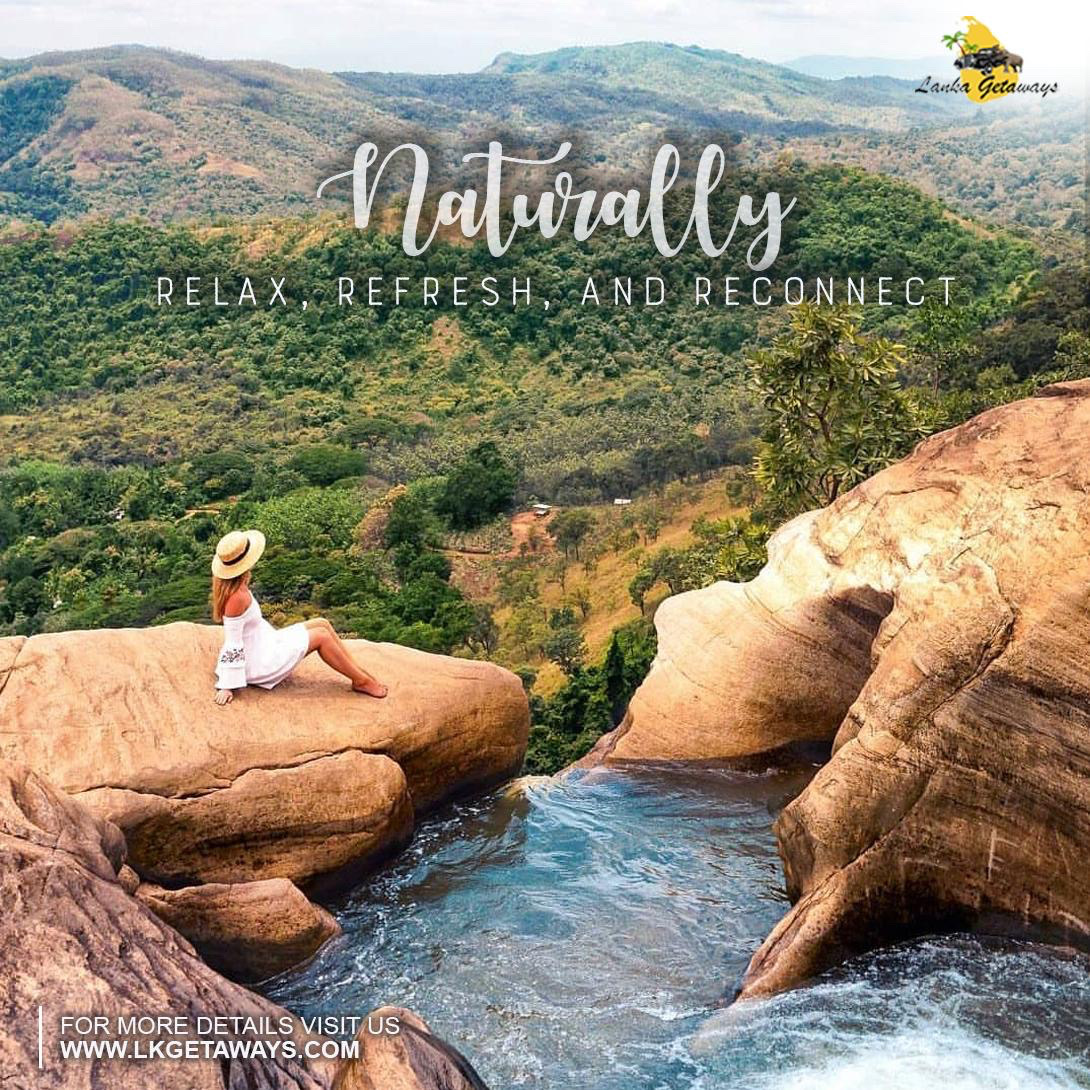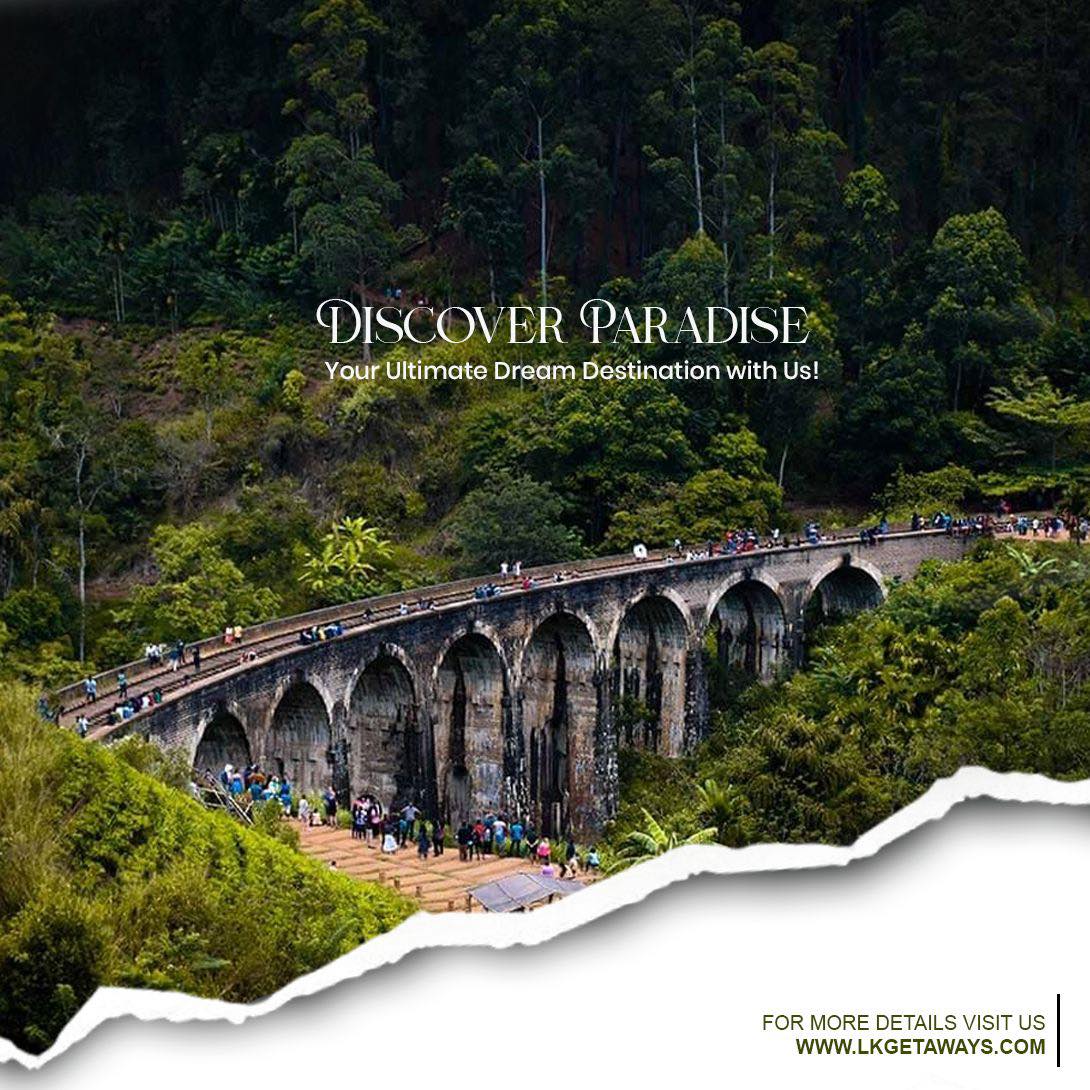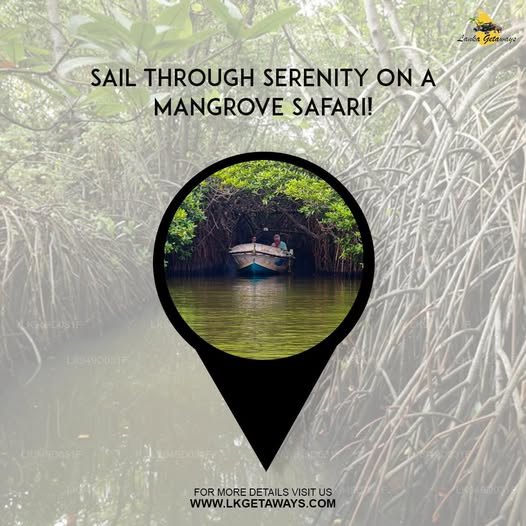Sri Lanka, an island blessed with diverse landscapes and rich biodiversity, offers a unique opportunity to explore its natural beauty through mangrove safaris. Mangroves are coastal ecosystems that thrive in the brackish water where rivers meet the sea. These unique habitats are teeming with wildlife and serve as essential breeding grounds for many marine species. A Sri Lanka mangrove safari is one of the most rewarding experiences for nature lovers and wildlife enthusiasts alike. Whether you're a birdwatcher, a wildlife photographer, or simply seeking peace and serenity in nature, a mangrove safari offers a tranquil yet thrilling adventure.
In this blog, we will take you on a virtual journey through the fascinating world of Sri Lanka's mangrove forests, their importance, the wildlife that calls them home, and the best places to experience a mangrove safari. To enhance your adventure, be sure to check out LKGetaways.com for expertly curated tours that allow you to explore these hidden gems of nature with ease and comfort.
The Importance of Mangroves in Sri Lanka
Mangrove forests in Sri Lanka are vital ecosystems that play a crucial role in the environment. These coastal forests provide many benefits to both the natural world and local communities. Mangroves are home to a variety of species, from fish to birds, and act as a buffer to protect coastal areas from the devastating effects of storms, floods, and erosion. Their dense root systems trap sediment and help to stabilize shorelines, preventing soil erosion and protecting the coastal communities from the harsh impacts of natural disasters.
Additionally, mangrove ecosystems are carbon sinks, helping to mitigate climate change by absorbing and storing large amounts of carbon dioxide. The role of mangroves in the environment cannot be overstated, making them an essential part of Sri Lanka's coastal landscapes. For those looking to learn more about these critical ecosystems, LKGetaways.com offers specialized tours that delve into the significance of mangroves and their role in preserving Sri Lanka’s delicate coastal balance.
The Wildlife of Sri Lanka’s Mangrove Forests
Sri Lanka’s mangrove forests are brimming with unique wildlife. The calm, brackish waters and the dense vegetation provide shelter and food for many species. On a mangrove safari, you will likely encounter a variety of animals that thrive in this ecosystem. Here are some of the most notable creatures you may spot during your adventure:
1. Birds
Sri Lanka's mangrove forests are a haven for birdwatchers. These ecosystems provide an ideal home for both migratory and resident bird species. Some of the most commonly seen birds in mangrove areas include:
- Herons: Both grey herons and little egrets are commonly seen hunting in the shallow waters of mangroves.
- Kingfishers: The vibrant common kingfisher and pied kingfisher can often be spotted perched on mangrove branches, waiting to swoop down and catch fish.
- Osprey: A symbol of the mangrove ecosystem, the osprey is often seen hovering over the water before diving to catch prey.
- Waterfowl: Various species of ducks and waders can also be seen in the mudflats and water channels of mangroves.
2. Marine Life
The brackish waters of mangrove forests are a safe haven for many species of marine life. The shallow waters provide a nursery for juvenile fish and crustaceans, many of which will eventually migrate to the ocean. During your safari, keep an eye out for:
- Fiddler crabs: These unique crabs are often seen scuttling along the mudflats. The males have one oversized claw that they use for communication and defense.
- Mudskippers: These fascinating fish are capable of moving both in water and on land, often seen "walking" on their fins along the muddy banks.
- Shrimp and other crustaceans: The rich biodiversity of the mangrove mudflats also includes various species of shrimp and small crustaceans, which are crucial to the ecosystem.
3. Reptiles
The mangrove forests of Sri Lanka are home to several species of reptiles, particularly those that thrive in wetland environments:
- Monitor lizards: The water monitor is commonly found in mangroves and can often be seen basking in the sun or swimming through the water.
- Sea turtles: While more commonly seen nesting on the beaches, sea turtles often feed in the mangrove areas and can sometimes be spotted while on a safari.
4. Mammals
Though harder to spot, some mammals also inhabit Sri Lanka's mangrove forests. These may include:
- Otters: Smooth-coated otters are occasionally seen swimming and playing in the waterways of the mangroves.
- Monkeys: Macaques and other species of monkeys may be spotted in the mangrove trees or foraging along the edges of the forest.
Popular Mangrove Safari Locations in Sri Lanka
Sri Lanka is home to several pristine mangrove forests that are perfect for exploring on a guided safari. These safaris often take place by boat, allowing visitors to navigate the winding waterways and get an up-close look at the rich biodiversity of the area. Some of the best-known locations for mangrove safaris include:
1. Madu River (Southern Sri Lanka)
One of the most popular mangrove safari destinations in Sri Lanka is the Madu River, located near the town of Balapitiya in the southern part of the island. The Madu River estuary is a vast network of mangrove forests, islands, and waterways, home to diverse wildlife and local fishing villages. The river is teeming with birdlife, and boat safaris offer a peaceful way to explore this picturesque location.
Visitors can also take a boat tour to visit small islands, where traditional fishermen still harvest mangrove honey and fish using age-old methods. The Madu River mangrove safari is a unique experience and is one of the most accessible mangrove tours in Sri Lanka. LKGetaways.com offers tours of this region, allowing travelers to explore the natural beauty of the river while learning about its environmental importance.
2. Puttalam Lagoon (Western Sri Lanka)
Located in the North Western Province, Puttalam Lagoon is another great destination for mangrove safaris. This large lagoon is home to extensive mangrove forests and offers visitors the chance to explore its tranquil waters by boat. The area is rich in biodiversity, and it is known for its migratory bird populations, particularly during the cooler months.
The Puttalam Lagoon mangrove safari is ideal for birdwatchers, nature lovers, and those seeking to experience the untouched beauty of Sri Lanka’s coastal ecosystems. LKGetaways.com can arrange guided tours to this serene location, ensuring an unforgettable wildlife experience.
3. Weligama Bay (Southern Sri Lanka)
Another scenic location for mangrove exploration is Weligama Bay, situated on the southern coast. Known for its calm waters, Weligama Bay is home to a variety of mangrove species that line the coastline. The mangrove forests here are important habitats for fish, crabs, and bird species, and they contribute significantly to the overall health of the local ecosystem.
Boat tours of the Weligama Bay mangroves provide a chance to spot local wildlife and learn about the conservation efforts being made to protect this fragile ecosystem. If you’re visiting the southern part of Sri Lanka, LKGetaways.com can help you include a mangrove safari in your itinerary for a deeper connection to Sri Lanka’s coastal ecosystems.
Best Time for a Mangrove Safari in Sri Lanka
The best time to go on a Sri Lanka mangrove safari is during the dry season, from November to April, when the weather is more pleasant and the waterways are easier to navigate. However, a mangrove safari can be enjoyed year-round, as Sri Lanka’s coastal weather remains relatively mild.
Conservation and Sustainable Tourism
Mangroves are delicate ecosystems that require careful management and conservation efforts to ensure they continue to thrive. Over the years, Sri Lanka has made significant strides in protecting its mangrove forests, with various NGOs and government bodies working together to promote sustainable tourism and mangrove conservation. LKGetaways.com supports eco-friendly tourism and offers tours that highlight the importance of preserving Sri Lanka's mangrove ecosystems for future generations.
Conclusion
Sri Lanka’s mangrove safaris offer an exciting and educational experience, allowing visitors to immerse themselves in the beauty and biodiversity of the island’s coastal habitats. Whether you're exploring the Madu River, Puttalam Lagoon, or Weligama Bay, each mangrove safari is a unique adventure filled with opportunities to see wildlife up close and learn about the importance of preserving these vital ecosystems.
To experience the wonders of Sri Lanka’s mangrove forests, be sure to check out LKGetaways.com, where you can find carefully curated tours that include visits to these natural gems. Whether you’re a nature lover, a photographer, or simply seeking a peaceful escape, a Sri Lanka mangrove safari is an unforgettable way to connect with nature.



